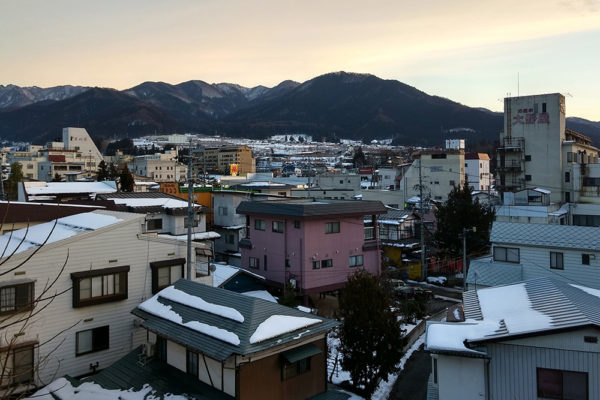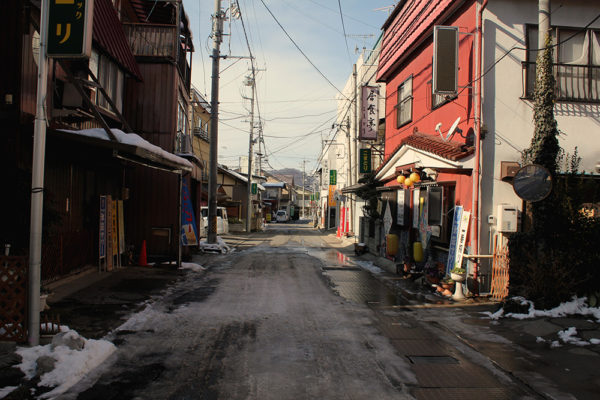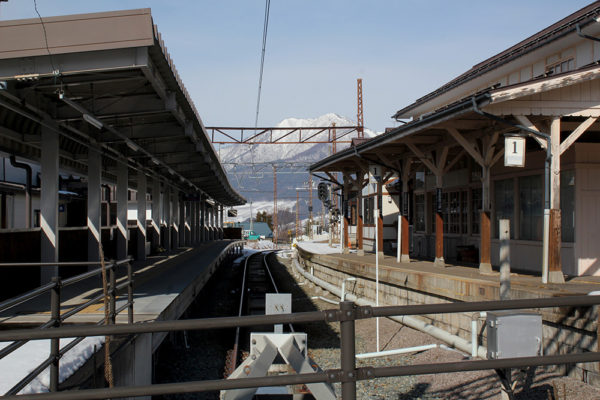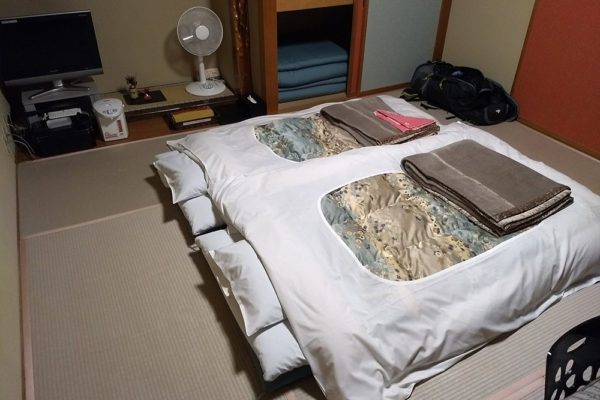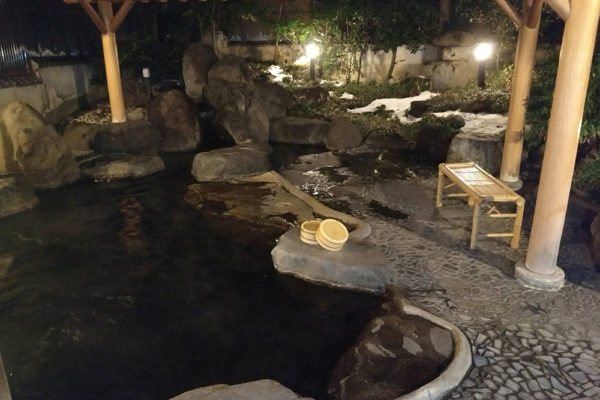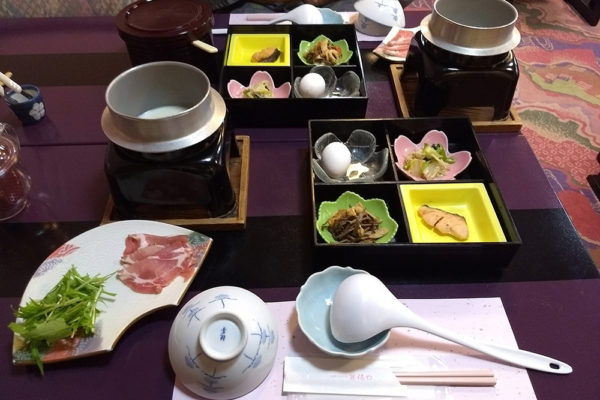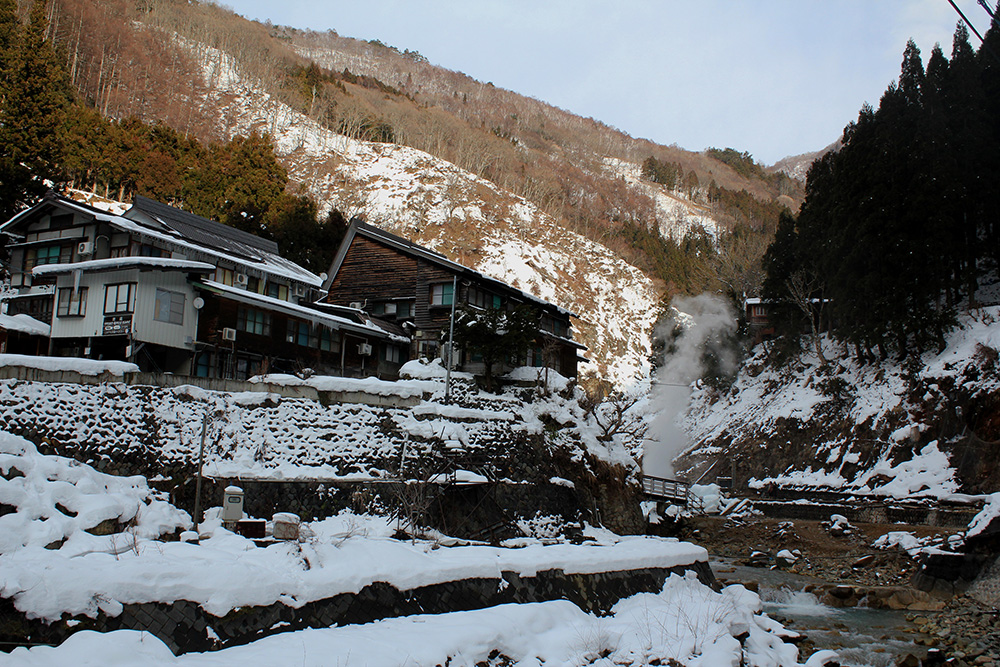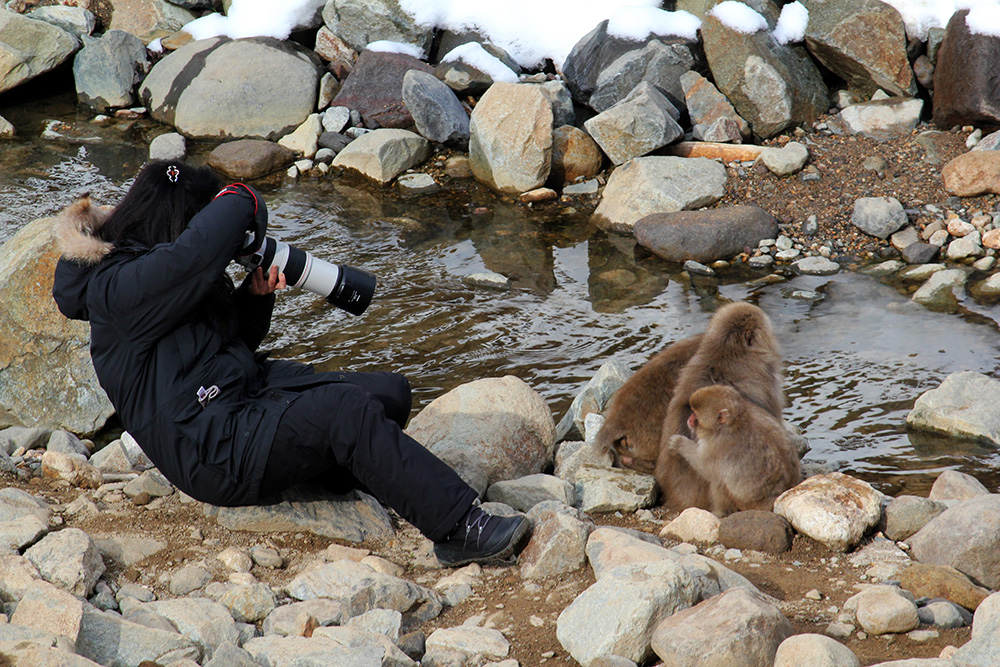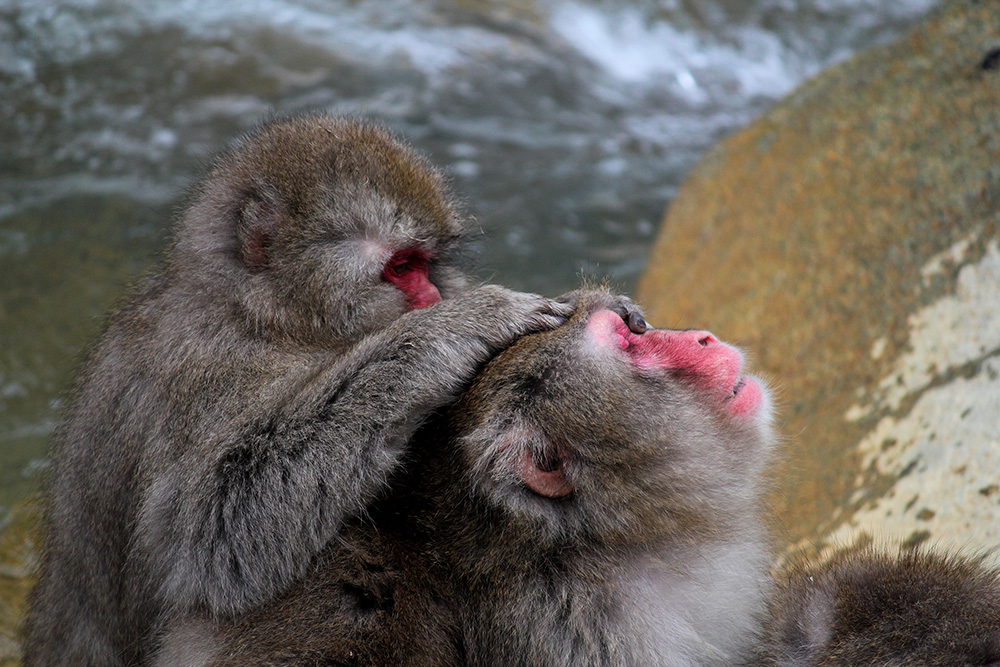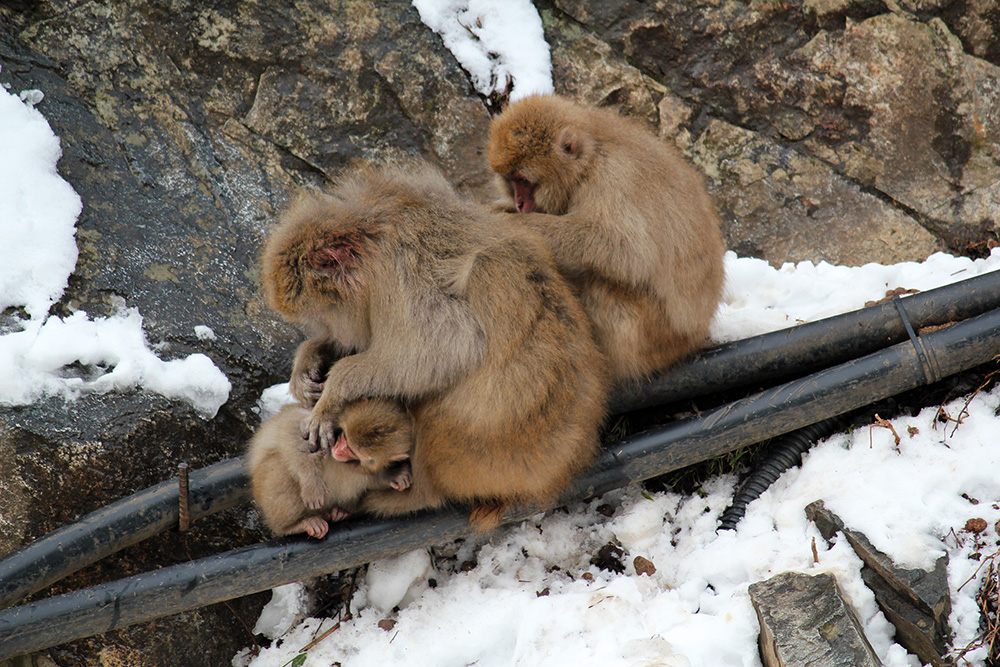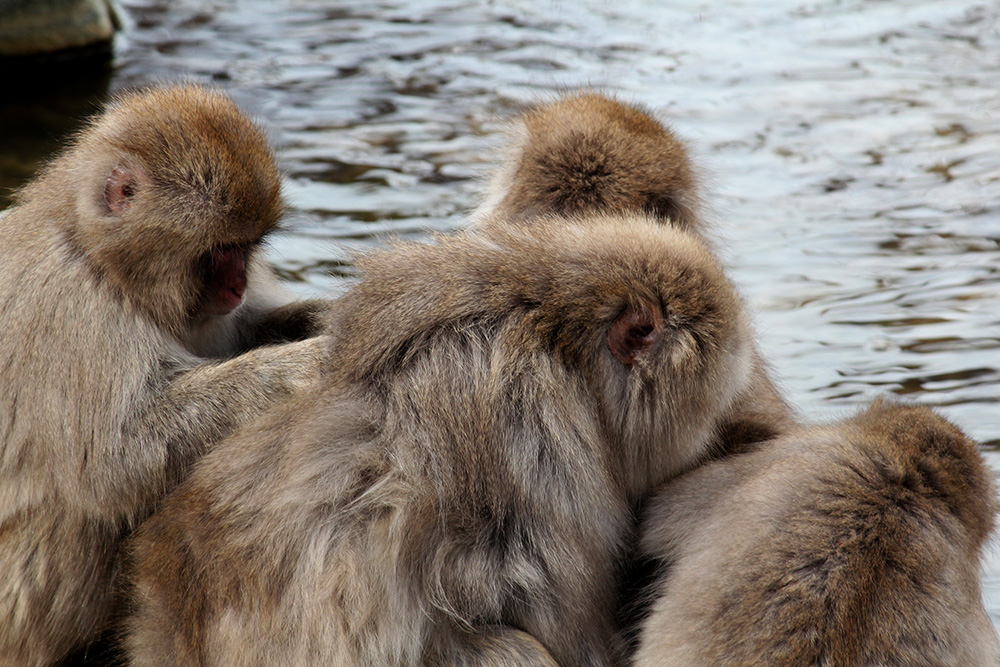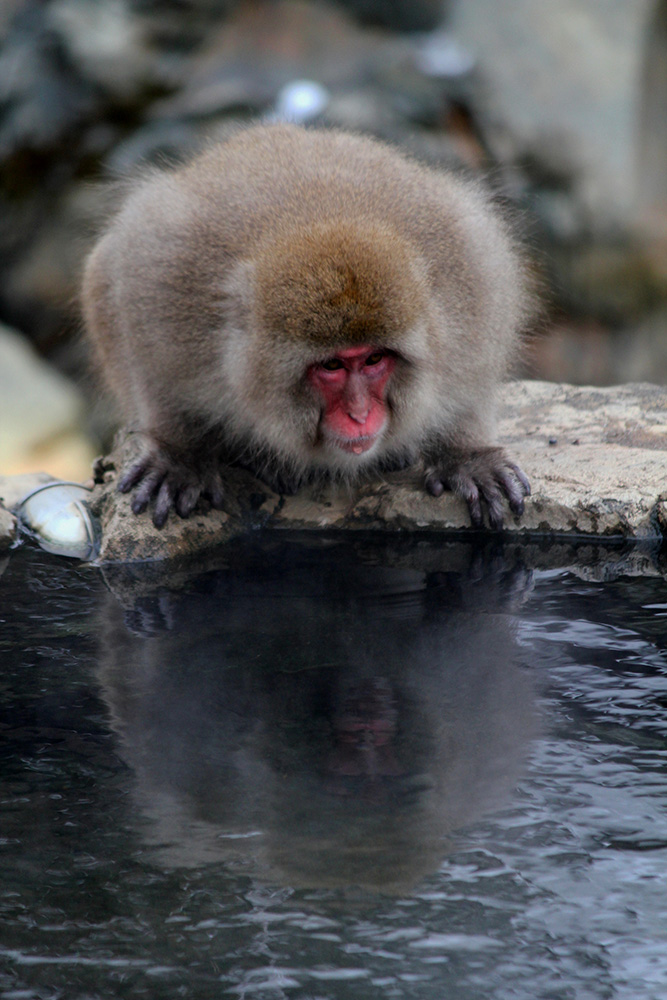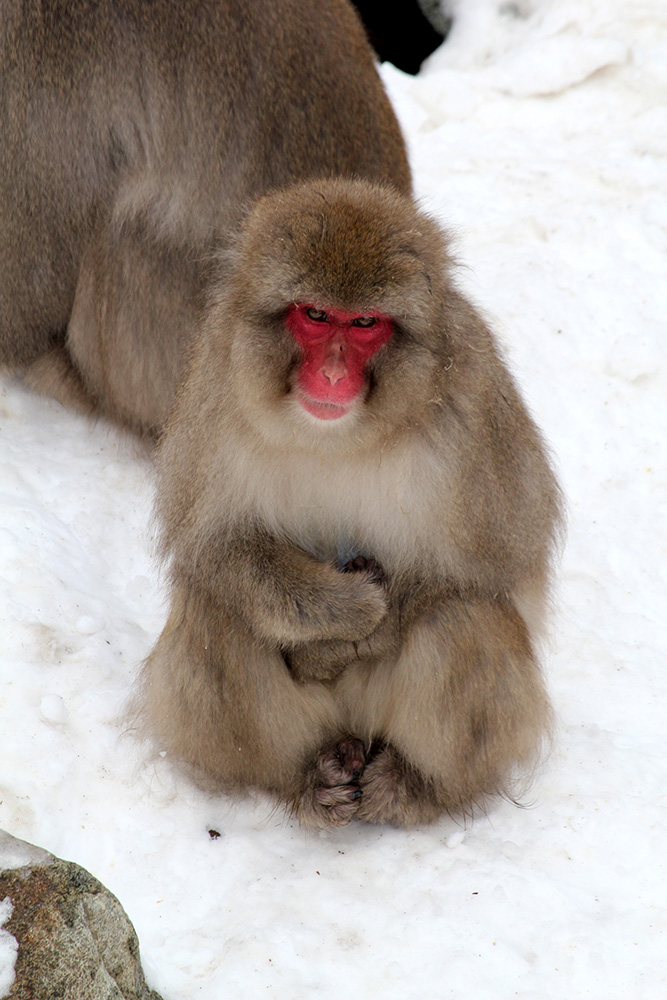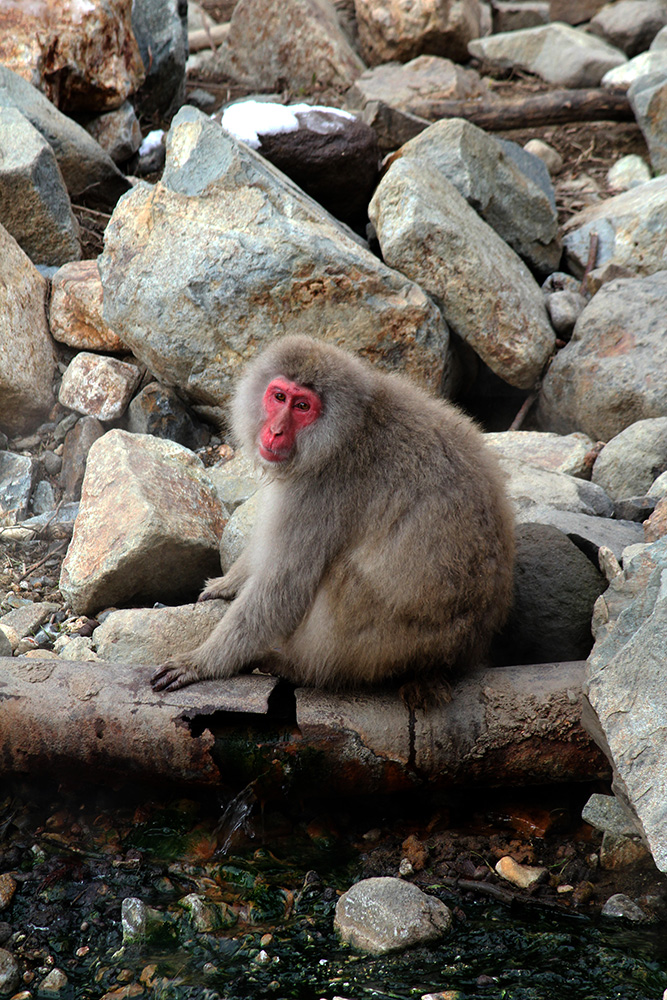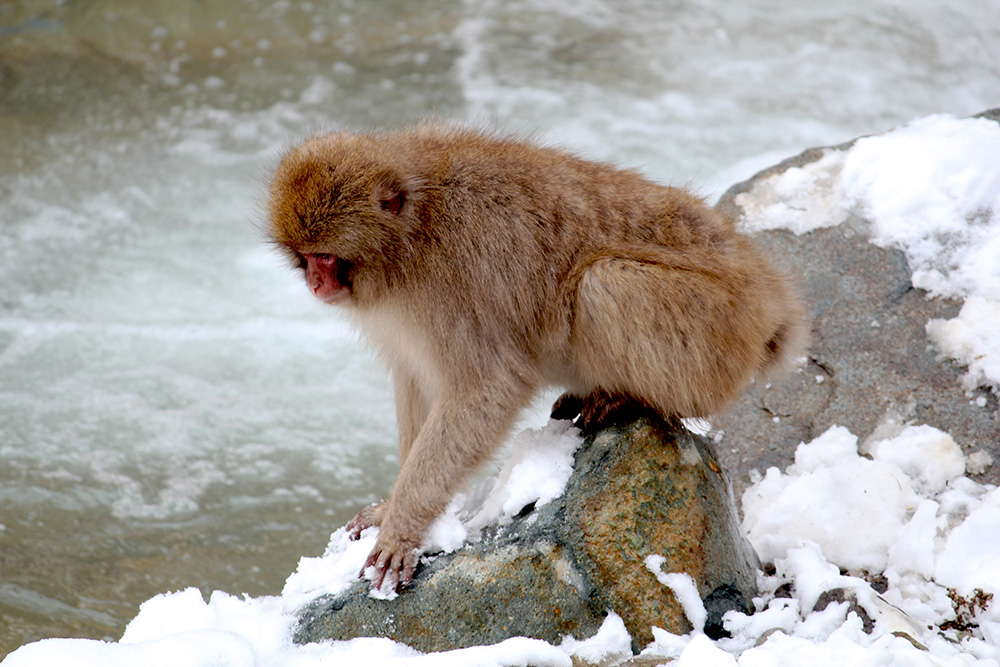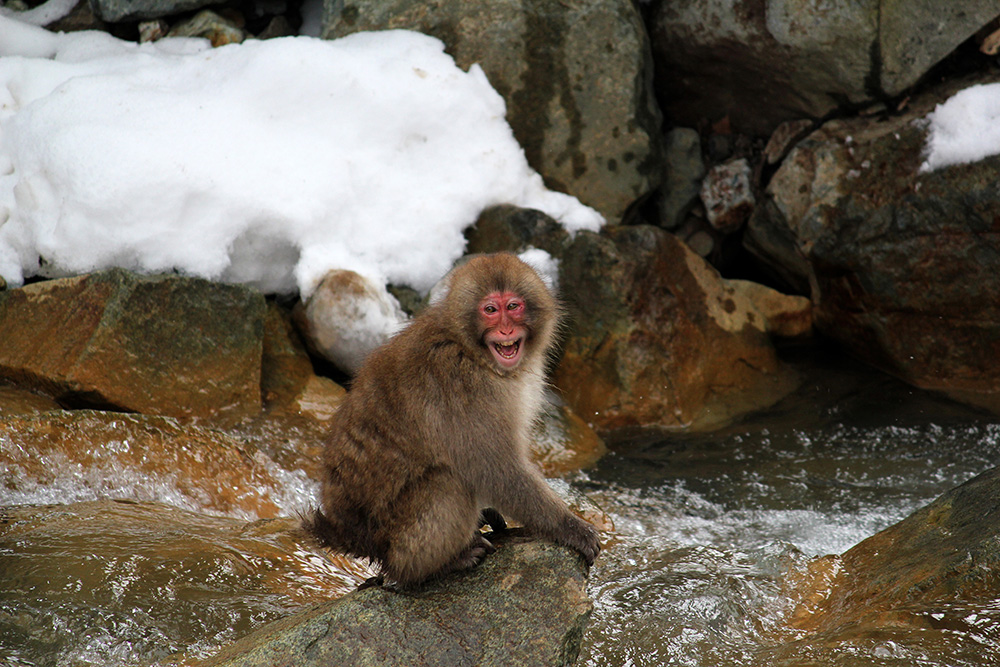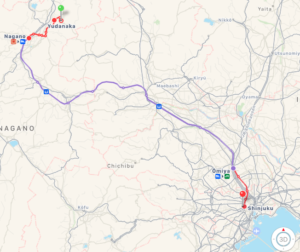 After Tokyo our next stop on our Japan trip was the small town of Yudanaka. It is a small onsen (=hot spring) town around 250km NW of Tokyo. To get there from Shinjuku Station, we took our first high speed shinkansen to Nagano. There we switched to the Nagano Electric Railway train that took us to Yudanaka Station. It was very interesting to experience the stark contrast between the high-tech, smooth shinkansen journey and slow, retro train. In the winter the Yamanouchi area is popular for skiing and the Jigokudani Yaen-koen or Snow Monkey park. Most of the hotels have their own onsen available to guest and after spending an aftrenoon walking in the snow, there really is little better than going for a soak in a hot bath! We only spent one night in the town, but it was a wonderful contrast to the big, busy neon-lit Tokyo.
After Tokyo our next stop on our Japan trip was the small town of Yudanaka. It is a small onsen (=hot spring) town around 250km NW of Tokyo. To get there from Shinjuku Station, we took our first high speed shinkansen to Nagano. There we switched to the Nagano Electric Railway train that took us to Yudanaka Station. It was very interesting to experience the stark contrast between the high-tech, smooth shinkansen journey and slow, retro train. In the winter the Yamanouchi area is popular for skiing and the Jigokudani Yaen-koen or Snow Monkey park. Most of the hotels have their own onsen available to guest and after spending an aftrenoon walking in the snow, there really is little better than going for a soak in a hot bath! We only spent one night in the town, but it was a wonderful contrast to the big, busy neon-lit Tokyo.
We decided to enjoy the experience of staying at a ryokan (=traditional japanese inn). These typically have traditional tatami (=mat) floors and futon beds to sleep on. They also usually include breakfast and/or dinner and will provide a yukata (=light cotton kimono) for wearing around the inn and to the onsen. Our ryokan was really nice and cosy, with a wonderful outdoor onsen. The onsen tend to be seperate for men and women, as the indoor ones were in the inn, but the ryokan usually offer private time slots or mixed times for the outdoor baths. I would really recommend staying at a ryokan at least once if you travel to Japan, because it is such a unique experience.
We went to Yudanaka to see the Japanese macaque (Macaca fuscata) or snow monkeys, famous for their habit of coming to the onsen for a soak. Although we didn’t actually see the monkeys bathing, the visit to the snow monkey park was really worth it. It’s a 30 min bus ride from the train station to the park and then a 30-40 min walk to get to the entrance of the monkey park. It’s a beautiful walk along a narrow snow-covered path through the forest. At the end of it you’re greeted by a beautiful scene of an old ryokan (established in 1864) squeezed into the valley. The only access to it is by foot and they advise their guests to travel light! Of course it also has an onsen for humans, that is occasionally visited by a monkey or two.

